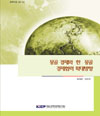Policy Analyses
PUBLISH
Policy Analyses
To list

The Mongolian Economy and Directions for Economic Cooperation with Mongolia
Economic cooperation, Overseas direct investment
Author Jae-Wan Cheong, Min-Woo Ryu Series 06-02 Language Korean Date 2006.08.14
The Mongolian economy, which began its transition to an open trade economy in the 1990s, has been in a period of stabilization since the 2000s. In particular, when excluding Eastern European countries such as the Czech Republic and Hungary from consideration, the Mongolian economy is evaluated having most successfully achieved the transition of its economy, with the fastest reorganization speed. According to the IMF, Mongolia suffered a relatively short time of economic turbulence compared to other countries in transition .
Since 2000, the successful post-transition Mongolian economy has experienced an increasing growth rate due to rich natural resources, the development of the private industry sector, foreign direct investment, and so forth. In 2004, Mongolia achieved an all-time high GDP growth rate of 10.7 percent, through the uniform development of all its industries and the sudden rise in international mineral prices. In addition, the Mongolian economy is characterized by a small population compared to its vast territory, the economically advantageous geographical position of being an inland country, and by being a resource-rich nation, a trade dependent economy, and a driftwood society.
Korea and Mongolia have rapidly developed cooperative relations in several fields such as culture and economy, facilitated by racial and cultural similarities, in spite of short period about 16 years. In particular, the Korean president's second visit to Mongolia helped to upgrade the two countries' relationship. Mongolia traditionally recognizes South Korea as 'Solronggoseu's country', and recognizes Korea as its main partner in Northeast Asian economic cooperation. Because of its geographical position and historical experiences, the Mongolian people generally take strict precautions when dealing Russia and China, whose political and economic systems have subjugated Mongolia in the past, and prefer Korea to Japan, because of geographical proximity and amity between the two countries. Mongolia looks to the South Korean experience as a model for its own economic development, and as such, the Mongolian government has established Korea as an important diplomacy target and is active in promoting relations with Korea. As a result, Korea is the first country with whom Mongolia established diplomatic relations after its transition to an open trade economy.
In addition, hallyu (the Korean Wave) continues to exist in Mongolia, and South Korea is considered a land of opportunity and hope to Mongolians (seen in their enthusiasm for studying Korean and the popularity of studying abroad in Korean universities). We can condense the directions of how best to extend economic cooperation between the two countriesextending Korea's ODA support, participating in Mongolia's rich mineral resources development, participating in the extension of the infrastructure-improvement business, and aid advances in agriculture and stock farming. More specific business prospects lie in cashmere, mining, energy, the Internet, communications, banking, and tourism.
Since 2000, the successful post-transition Mongolian economy has experienced an increasing growth rate due to rich natural resources, the development of the private industry sector, foreign direct investment, and so forth. In 2004, Mongolia achieved an all-time high GDP growth rate of 10.7 percent, through the uniform development of all its industries and the sudden rise in international mineral prices. In addition, the Mongolian economy is characterized by a small population compared to its vast territory, the economically advantageous geographical position of being an inland country, and by being a resource-rich nation, a trade dependent economy, and a driftwood society.
Korea and Mongolia have rapidly developed cooperative relations in several fields such as culture and economy, facilitated by racial and cultural similarities, in spite of short period about 16 years. In particular, the Korean president's second visit to Mongolia helped to upgrade the two countries' relationship. Mongolia traditionally recognizes South Korea as 'Solronggoseu's country', and recognizes Korea as its main partner in Northeast Asian economic cooperation. Because of its geographical position and historical experiences, the Mongolian people generally take strict precautions when dealing Russia and China, whose political and economic systems have subjugated Mongolia in the past, and prefer Korea to Japan, because of geographical proximity and amity between the two countries. Mongolia looks to the South Korean experience as a model for its own economic development, and as such, the Mongolian government has established Korea as an important diplomacy target and is active in promoting relations with Korea. As a result, Korea is the first country with whom Mongolia established diplomatic relations after its transition to an open trade economy.
In addition, hallyu (the Korean Wave) continues to exist in Mongolia, and South Korea is considered a land of opportunity and hope to Mongolians (seen in their enthusiasm for studying Korean and the popularity of studying abroad in Korean universities). We can condense the directions of how best to extend economic cooperation between the two countriesextending Korea's ODA support, participating in Mongolia's rich mineral resources development, participating in the extension of the infrastructure-improvement business, and aid advances in agriculture and stock farming. More specific business prospects lie in cashmere, mining, energy, the Internet, communications, banking, and tourism.
The Mongolian Economy and Directions for Economic Cooperation with Mongolia
Sales Info
| Quantity/Size | 82 |
|---|---|
| Sale Price | 5 $ |
 공공저작물 자유이용허락 표시기준 (공공누리, KOGL) 제4유형
공공저작물 자유이용허락 표시기준 (공공누리, KOGL) 제4유형
대외경제정책연구원의 본 공공저작물은 "공공누리 제4유형 : 출처표시 + 상업적 금지 + 변경금지” 조건에 따라 이용할 수 있습니다. 저작권정책 참조
